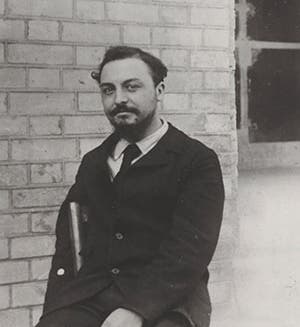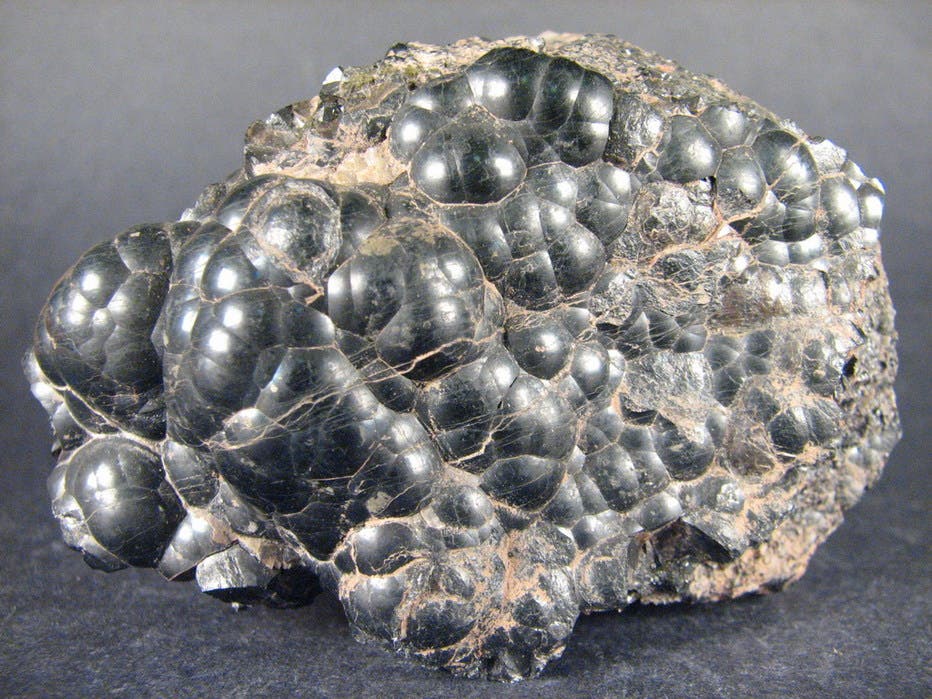Scientist of the Day - André-Louis Debierne
André-Louis Debierne, a French chemist, was born July 14 ,1874, in Paris. Debierne studied under Pierre Curie and joined the lab of Pierre and Marie Curie in Paris as a lab assistant around 1898. He is best known as the discoverer of a new radioactive element, actinium, in 1900. The fact that uranium emits radiation had been discovered in 1896 by Henri Becquerel. Marie Curie found that another element, thorium, very near uranium at the bottom of the periodic table, is radioactive as well. The Curies then decided to look for other, perhaps new, elements that might be radioactive as well. They located a supply of pitchblende, a uranium ore, in Austria, found that the ore emitted more radiation than uranium itself, and surmised that there might be undiscovered radiation-emitting elements in the ore. It was a very tedious process, chemically sifting through the ore to isolate the source of radiation, which is where Debierne came in, assisting the Curies in this laborious task. The Curies soon discovered (in 1898) a new element that contributed to the radioactivity of the pitchblende, which they named "polonium," after Marie's native land of Poland. And soon they found another element, a much more intense source of radiation than uranium, thorium or polonium, which they named, logically, radium. The Curies (and Debierne) would spend the next decade trying to extract a sufficient supply of radium for their experiments from their pitchblende horde.
And now Debierne re-enters our story. He wondered whether there might be other radioactive elements in the pitchblende residue, with characteristics different from the four known radioactive elements. In 1899, he announced in a brief paper that he had found a source of radioactivity with properties similar to those of titanium, and then in 1900, in a second paper, he announced that it was actually more like thorium, and this time, he gave his new element a name, actinium. He was not able to isolate the element, nor could he determine its atomic number or weight (we now know that actinium has atomic number 89 (three below uranium) and an atomic weight of 227). In 1902, a German chemist, Friedrich Giesel, independently discovered a new source of radioactivity in pitchblende, and he was able to isolate it. He named it "emanium," for its emanations. By 1904, it was realized that actinium and emanium were the same element, and since Debierne's name had priority, it was retained, and the name emanium eventually disappeared. There was a flurry of scholarly activity in the 1970s, as some historians of chemistry argued that Debierne's published results were so contradictory that there is considerable doubt as to whether he was working with actinium at all, and that Giesel should get the credit for the discovery of actinium. It was also learned that two giants of radioactivity, Ernest Rutherford and Bertram Boltwood, in their correspondence around 1906-07, were very dismissive of Debierne’s work and didn’t think he really discovered anything. More tolerant historians of chemistry later pointed out that in 1900, radiochemistry was so new that no one really knew what they were doing, and there were so many radioactive decay products in any sample of pitchblende that it must have been impossibly difficult to make sense of it all. So we should leave poor Debierne alone. He probably did have actinium in his samples, and he named his unknown source, and we should leave it at that. Giesel was probably the better radiochemist. But Debierne was first.
That said, we now turn to the part of Debierne's career that usually gets left out in all the discussion of who really discovered actinium. Debierne was Marie Curie's right-hand man for much of her life (she died in 1934). When Pierre Curie was killed in a carriage accident in 1906, Marie became director of the laboratory, and Debierne assumed her former role as chef des travaux (chief of operations). He had to manage all the students and interns, and he was apparently very good at the job. An Englishwoman, Sybil Leslie, who was a graduate student in the lab from 1909 to 1911, had this to say about Debierne: "He is a Frenchman of the most charming type, gentle, kind, and courteous in manner, and with a vast fund of patience which he certainly needs, for the advice offered in every difficulty is ‘Demandez à M. Debierne.’” You can read a fuller account of Sybil Leslie's recollections in the forthcoming book by Dava Sobel, tentatively titled: At Mme. Curie's Lab: Radioactivity and a Place for Women in Science, due out in 2024.
When Madame Curie was finally able to isolate metallic radium in 1910, she did so with Debierne, and the paper was signed by the two of them. And when she was subjected to horrific abuse from the French press in 1911, when word of her affair with Paul Langevin got out, Debierne was one of the very few who stood by her all the way.
The pictorial record of Debierne’s existence is very small. He appears in a group photo of a Solvay Conference in Brussels in 1922, a tiny detail of which was used for his portrait in his Wikipedia article. Then there is the photo we show here (first image) of a young Debierne, source unknown. And there is a group photo that includes Marie Curie and her older daughter Irène, and four male scientists, with Debierne the one at the far right. For some reason the Science Photo Library has a copyright on this photo, so I can’t show it to you here, but I can connect you to the photo on their website. It is worth a look, despite the obtrusive watermarks.
Debierne took over directorship of the Curies’ Radium Institute in 1934. He died in 1949, with radiation poisoning no doubt a contributing cause of his death.
William B. Ashworth, Jr., Consultant for the History of Science, Linda Hall Library and Associate Professor emeritus, Department of History, University of Missouri-Kansas City. Comments or corrections are welcome; please direct to ashworthw@umkc.edu.






![Using an astrolabe to measure the depth of a well, woodcut in Elucidatio fabricae vsusq[ue] astrolabii, by Johannes Stöffler, 1513 (Linda Hall Library)](https://assets-us-01.kc-usercontent.com:443/9dd25524-761a-000d-d79f-86a5086d4774/a998eb50-55d2-4a88-ace2-a50aa5fa86e7/Stoffler%201.jpg?w=210&h=210&auto=format&fit=crop)

